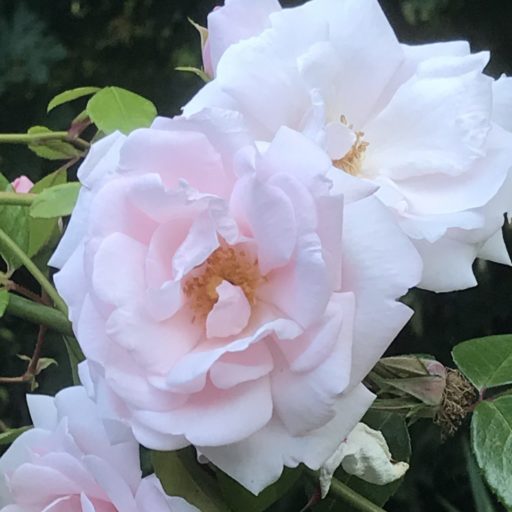We have the ability to greatly improve lives, or to ignore situations and let lives be lost. Not just human lives, as in the case of the current cholera epidemic in Zimbabwe, but the lives of all residents of earth. It turns out that many of the substances we use to improve human lives have detrimental effects on the environment – on the life of the plants and animals around us and downstream of us.
Two hundred years ago few of my ancestores, if any, thought the words “healthy” and “tan” were compatible. Instead, women jealously guarded their skin, and mean wore hats when outside. Most people in the northern hemisphere, away from the equator (and many peoples at the equator in places that lacked tree cover), kept their bodies well covered. To be fair, that was partly because of the cold; but hats, long sleeves and leg coverings were common year-round among fair-skinned people.
I am fair-skinned. Few people are more naturally ghost-like than I am, my veins showing through the thin skin on the inside of my arms and on my feet. I was born with such pale hair that even after it grew a bit I still looked bald (photos of me at one year bear this out). My eyes are grey — perhaps the only part of me that started out with some life — they reflect my surroundings rather than dominate them. And though my hair is now quite dark, I retain the essential pale-ness of my childhood.
When I was a child, I remember my mother slathering on the sunscreen. Coppertone, mostly – it was ubiquitous. I wasn’t going to burn if she had anything to say about it! Which was a good thing, because when I was a child people often didn’t cover up. It was the era of perhaps the greatest use of bikinis; shorts, sleeveless tops, miniskirts; even tube tops. Women and men went about mostly uncovered in hot weather. Aside from the occasional towel draped over the shoulders, people at pools and beaches, in parks and backyards, paraded about uniformly as if they were impervious to the damaging effects of the sun’s rays.
As a more mature adult, I tend to wear long sleeves year-round, long pants or skirts, and a hat when I am in the garden. This is just my “style.” But I also drifted away from using sunscreen at some point. Perhaps it was when I was younger and my finances barely covered rent and food. I have also developed serious reactions to many fragrances and find some sunscreens are now impossible to live with. Either way, I am unused to the smell and feel of it, and tend to avoid it for myself (though I used to insist on my children using it in the summer). This is beginning to show on my face, which has a few age spots developing, like pale freckles across my cheeks.
I was considering trying again to find a sunscreen for my face, to minimize further damage, when I came across an article in Slate’s online magazine: Staying Green in the Sun. And it got me thinking again. Sunscreens and other cosmetics, drugs and substances we use on a daily basis (soap, detergent, cooking oil) have environmental costs both in their manufacture and in the aftermath of their use. When we dispose of, or wash off, these substances, where do they go? What effects do they have? The research is starting to come in, and it isn’t good in many cases.
Now we are being cautioned, not just by magazine reporters but by scientists, to look carefully at the long-term residual effects of all these things as well as their immediate benefits. This is all well and good. “Mindfulness” — though the word is overused — of necessity, a sober cost-benefit analysis, is generally a reasonable step in determining whether we need or merely want, anything.
Putting aside the purely cosmetic (and vain) considerations of how my skin looks, my mother is a 20+ year survivor of melanoma; which means that for me, the risk is higher still of contracting this often-fatal disease. Yet I require a fair amount of real sun exposure to combat the seasonal depression I experience every year. Truthfully, I am far more productive and have greater endurance in the summer when I am out in the sun on a regular basis. I need the sun, but I don’t need the lasting effects on my skin. And, it turns out, in addition to my own chemical sensitivities making most sunscreens now off-limits for regular use, the sunscreen that is so common in our developed world may be contributing to species decline.
A thousand years ago, though overall life expectancy was not as great as today, skin cancers and sun-related skin problems were far less common. What did they know, and how did they discover it?
Perhaps we need to return to the old forms: long garments and hats, gloves when outside, parasols (for the sun, different from rain umbrellas), sitting in the shade and resting during the heat of the day. More than vanity and tradition, these may be methods to protect ourselves – and our fragile world.
On a side-note, the BBC carries an article today on the longest-married couple: Couple Celebrates 81st Anniversary. I know that sunscreen was little used in their day… still they are happy, as healthy as 100+ year olds can be, and still married. What is their secret? Hinted at in the article, it is common sense.

Leave a Reply